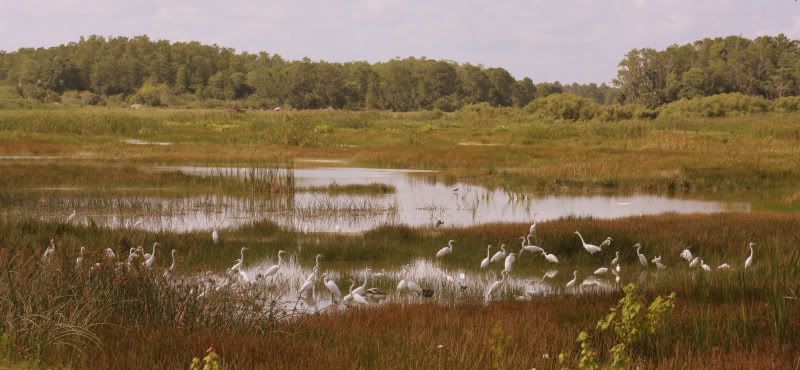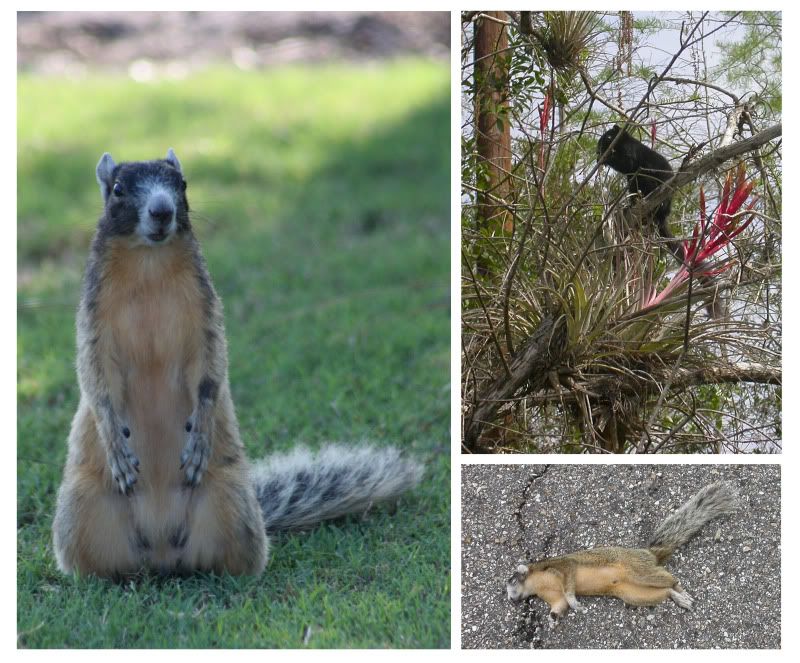There are a variety of benefits to doing things in groups. Consider
the last cookout you attended. Someone else bought the food. Someone else
cooked and cleaned up. There was less risk of being eaten by a predator. Communal
roosting makes sense too. Eating and roosting together makes sense for Great
Egrets, Snowy Egrets and White Ibis.
More ears and eyes means predators are at a disadvantage
during a sneak attack. While roosting, huddling can conserve warmth for those
with the best spots in the roost. The downside is when you head out for
breakfast in the morning everyone follows. The older and experienced birds
tolerate social parasitism in exchange for safety in numbers. There is a
pecking order and bigger birds can dominate others in the flock.
Finding food is also easier with many eyes looking. Once
located, the buffet commences. Here a flock of Great White Egrets, Snowy Egrets
and a few White Ibis have found a high concentration of fish and frog eggs to
feast on.
Around the outskirts of the buffet are Little Blue Herons
who are exhibiting commensalism. As the Egrets and Ibis stir things up, the
Little Blue Herons feed on what the rest of the birds are not interested in.
Essentially commensalism is when one species feeds among others and benefits
without harming or benefiting the main species. In this case the Little Blue
Heron is the guy that came to the party with the friend you invited. Little
Blues are twice as successful when feeding commensally as opposed to
individually.
May marked the end of the dry season in Florida






